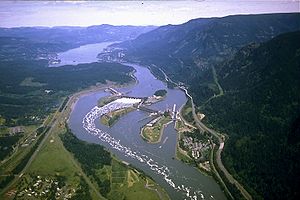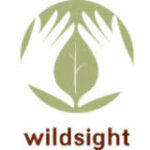Tales and Legends of the Mountain Kingdom: A Tale of Many Papers
Back in the 1890s, Rossland was not only a gold and mining speculator’s dream come true, but it was also ripe with opportunity in other fields. I mean, what one thing does every self-respecting muddy mining camp way out in the sticks, filled with rough-and-tumble folks from all over the place, need as badly as a saloon and a general store? It needs an official soap box! Everyone knows that. Where would we be as a society without our community mouthpieces—newspapers? Less civilized, that’s where.
And Rossland in the 1890s needed that touch of civilization, that sense of erudition, that place of pontification: it needed a newspaper. And, like the gold rush that was going on at the mines, Rossland had its own little newspaper rush happening. It seems that there were not only golden opportunities of the literal kind ripe for the taking here, but also a golden opportunity for ambitious newspaper men to make their marks as well.
Our first paper, the Rossland Record, came on the scene on February 1895 with its first issue being published on the 18th of that month. The building it was housed in was part of an enormous construction boom that had started the year before and seen the erection of dozens of hotels, stores, offices, and saloons along Columbia Avenue. The Rossland Record was located at the corner of Columbia and Spokane and the press came from Northport via steamer.
There were, according to Harold Kingsmill’s First History of Rossland, a couple of “one-off” editions of the paper before the first official issue, but it’s not mentioned when they came out or how they were produced. With building happening at such a frenetic pace in town, the owner of the Record, Eber C. Smith, had some delays in getting his press into town because so much of the room on all the freighters coming into the area were filled with building materials. But when the press finally did arrive, it was installed above a general store called Edgren’s, and according to Kingsmill, it had “a very credible production, and spoke volumes for the stability and energy of the new town.”
In June 1895, Eber moved the Record offices to the brand new Record Block, which from what I gather by Kingsmill’s description, was either right next door or just a few feet away from its original location. It shared space with the CPR Telegraph Company.
But what is better for a burgeoning little place like Rossland than having one paper? Well, two papers, of course. Not to be outdone, in March of 1895, two men from Nelson, Mr. Houston and Mr. Drake, set up a second paper, this time in Ross Thompson’s old cabin, and called it the Rossland Miner. It was edited by David E. Bogle and was an eight-page, three-column affair that, in Kingsmill’s words, “had the distinction of being printed on book paper.” The location was temporary; the Miner eventually moved the to the heart of downtown, to the Teetzel Block, in August after Bogle bought the paper off the owners.
Switching our attention briefly down the hill, it’s worth noting that, even before Trail was Trail, the Silver City had a paper of its own. Before the Crown Point Hotel–in what was then known as Trail Creek Landing–was complete, and before the smelter was built, Trail had a weekly newspaper in the latter part of 1895. One day in October of that year, a man from Sprague, Washington, just happened to disembark from the steamer, Lytton, hauling along with him a newspaper handpress and a whole lot of enthusiasm. Within a couple of weeks, he rounded up some volunteers who helped him build a shack with rudimentary tools to house himself and the press.
He only lacked paper, which was apparently delayed. But that didn’t stop him. He borrowed some wrapping paper from the grocery store, and on October 19, he published the first issue of the Trail Creek News, which was meant to be a weekly.
Meanwhile, back in Rossland, the thought must have been going around ‘what could possibly be better than two town newspapers? How about three!’ In July 1895, the Rosslander was launched by editor W.A. Pratt, but in April 1896 he sold the whole operation, equipment and all, to two men, Mr. Jones and Mr. Northey. By the time Kingsmill wrote his history of Rossland, which is estimated to be sometime in 1897, he stated that the Rosslander “commands a liberal share of the local subscription and advertising patronage.”
And it gets better! With all the growth in Rossland in its early years, more publications were obviously necessary because three certainly couldn’t be enough. In June 1896, as Columbia Avenue continued to develop rapidly, Smith decided to start publishing The Evening Record. Kingsmill says it “was a paper filled with the local field of daily journalism…It fully covered the local district, and its files for that period certainly are a very complete history of the town, camp, and happenings.”
In the continual game of newspaper one-upmanship, the Miner completely relaunched in July of 1896, upgrading itself from three columns to six, and sporting a new eight-page folio format. Content-wise, Kingsmill describes the paper as “devoted almost entirely to the mining interests of the camps of Kootenay, and the Trail Creek Camp in particular.”
But it didn’t end there. David B. Bogle of the Miner and a business partner, A.R. Macdonald, hatched a plan to publish a fourth newspaper, the ill-fated Mining Review. It launched in September 1896, but its run was short-lived, lasting, from what I can glean, less than a year. In Kingsmill’s words, “This paper has since gone the way of all flesh. It is the only newspaper in Rossland that has been stranded on the rocks of adversity.”
The population of the town at that time, by Kingsmill’s estimation, was about 6000. It’s not surprising, then, that the newspaper market had tapped itself out by the time the Mining Review came to be, and its demise indicates that three papers turned out to be plenty.
But there were other attempts. In Jeremy Mouat’s book, Roaring Days, he mentions in his notes two other publications I haven’t seen mentioned anywhere else I’ve looked. One is the Truth, which had at least 24 issues and was in business in 1903, and the Rossland Saturday Night Miner, which was producing issues as late as 1920. On the Crowsnest Highway web site, there is reference to The Rossland Times, which was apparently read by Ross Thompson, and The Rossland Star, which had a 14-month run from approximately 1905 to 1906.
I haven’t been able to find out when the Rosslander went out of business, but I suspect, from what the Crowsnest Highway web site says, that by 1906, the Rossland Record was gone, too. The most enduring paper was the Rossland Miner, though it fell victim to the post-gold rush decline, and in 1919, it went down to a weekly publication schedule. For a time, it was published by William K. Esling, who has a street named after him, and who also, for a while, published the Rossland Record. He went on to become a Conservative MP and spent over 20 years in Parliament.
As the landscape of the town changed, and as the landscape of the mining industry changed, so did the landscape of the press. The fast and furious pace of Rossland’s first few years is reflected in the competition for newspaper dollars and publication prestige. Over the years, the press in Rossland has taken on several different forms produced by different people and companies, but what has always endured is need for a voice, and a need to get news out to the public. No matter how small and sleepy we might be, the desire for connection with the community and the enthusiasm the community has for a voice remains strong, and that, perhaps, is the lasting legacy of the early presses in Rossland.
Sources:
Roaring Days: Rossland’s Mines and the History of British Columbia, by Jeremy Mouat
Topping’s Trail, by Elsie Turnbull
First History of Rossland, BC, by Harold Kingsmill
http://www.crowsnest-highway.ca/
http://www.discoveringthekootenays.ca


























